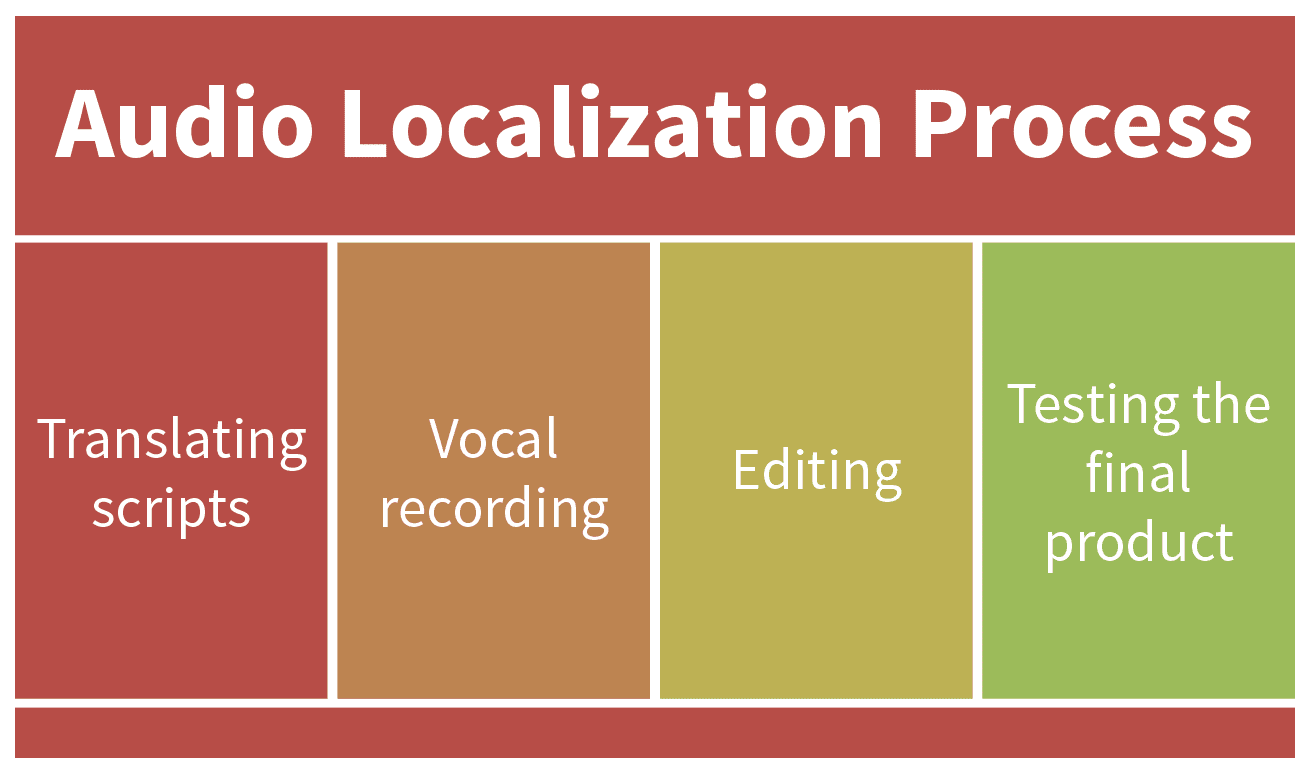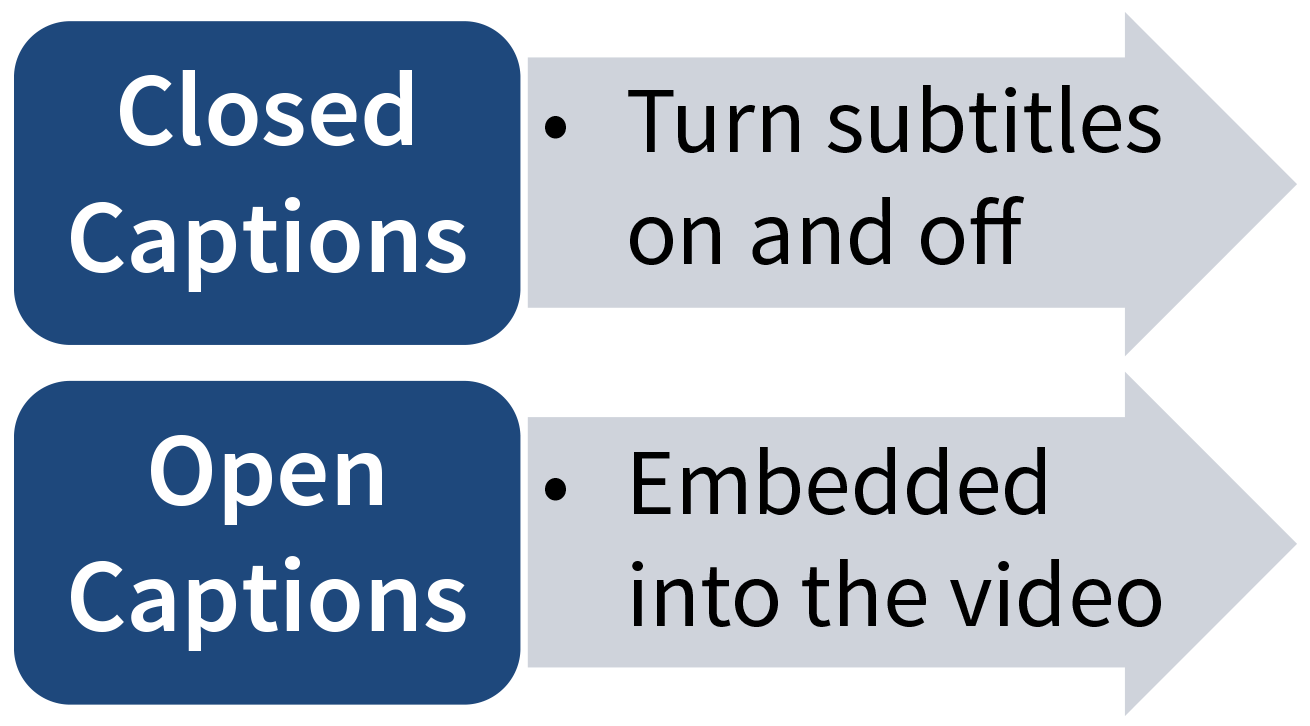Audio localization and subtitle translations are everywhere, including websites, training materials, and ads. As a result, international organizations need to weigh the benefits of multimedia localization for global marketing and sales of their services and products.
Being able to produce multilingual audio content requires audio localization experience. Localized language text that exceeds the length of the original source language text can be a challenge for translators who are not familiar with video translation.
You might be wondering:
What does the audio localization process entail?

In short, audio localization entails translating scripts, audio recording, editing, and testing the final product.
7 audio localization steps for success
Audio localization is an important element for most multimedia localization projects..
…but it is also a complicated process.
Translating and localizing audio and other multimedia content into target languages presents technological and production issues. It requires extensive experience with a wide variety of media formats, standards, and the dynamic mediums used by organizations to convey information.
Still, translating audio into another language is beneficial. The primary steps required for audio localization are:
- Transcribe the audio script
- Translation of the audio script
- Conduct localization testing of translated scripts
- Place time stamps on the translated script
- Record the script using professional voice talent
- Perform video editing, sequence localization, and quality assurance
- Assimilate the recording for localization for integration into the final platform
Tip: Audio localization projects are never completely finished. Make sure to monitor the impact it has and be willing to learn how to improve the overall quality of your audio translation.
Subtitle advantages

For subtitle translation, use the source to transcribe and translate. Then, insert the foreign language subtitles back onto the video.
There are 3 key advantages to subtitling, such as:
- Less expensive than voice-over production
- Does not affect the original audio track of your video
- Allows for the viewer to read along with the audio
Using a professional translation company can ease the video localization and subtitle translation process.
Best practices for subtitle translation
Some companies choose to utilize subtitles that appear at the bottom of the screen on the bottom third frame. The subtitle captions are synced with the audio.
There are usually two choices for subtitle translation:

Last minute tips
If subtitling is required, it is ideal to design the video so that there is adequate space for the captions. Also, it is important to analyze the impact that subtitles have on the finished product.
You should consider making use of subtitles when dealing with shorter videos that are 10 minutes or less.
For example, if a video is long, a user may lose interest in the content if it is subtitled because if it is too laborious to follow.
Subtitles are not very compatible with videos containing many graphics or on-screen demonstrations. Subtitles can get lost in the visuals because there is too much for the user to view. Distraction to the user can result in losing the effectiveness of the localized video.
A progressive approach to all language technologies enables the creation of a product to meet specifications of local markets and target audiences. Interpro has a comprehensive range of multimedia localization services. Whether you use subtitle translation or audio localization, your localized video will enhance your content for your multilingual audience.

